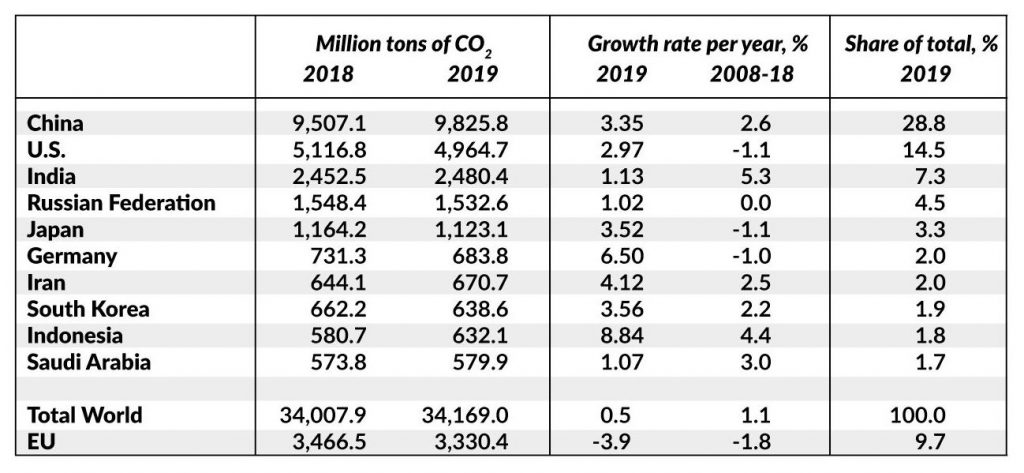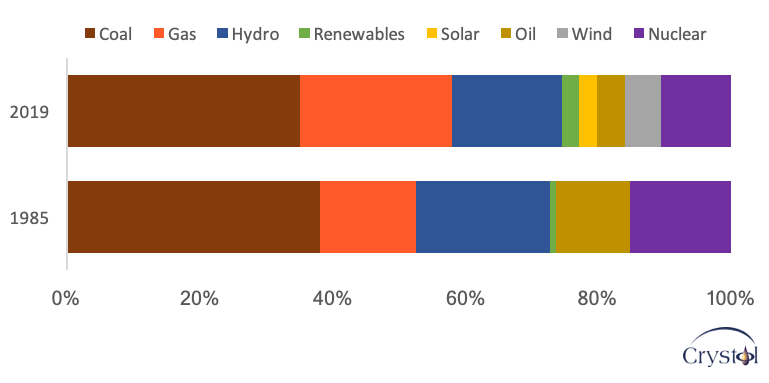Dr Carole Nakhle
The Covid-19 crisis has not diminished the momentum of ambitious climate and energy targets and policies; if anything, this pursuit continues to grow as more governments are determined to “build back better.” New tougher pledges are announced to minimize greenhouse gases (GHG) emissions, the culprit behind the warming of the climate, with carbon dioxide (CO2) contributing the lion’s share.
According to the International Energy Agency (IEA), the energy sector, which is the source of around three-quarters of GHG today, holds the key to responding to addressing the global climate challenge. In its flagship “Net Zero by 2050” report published in May 2021 the agency gives several recommendations to achieve net-zero emissions by 2050. Although still a work in progress, the net-zero concept refers to the amount of GHG added into the atmosphere being no more than the amount taken away.
World largest CO2 emitters

Data Source: BP, 2021
One of the IEA’s bold recommendations involves halting the approval of new oil and gas fields for development, beyond projects already committed as of 2021. It is a stark departure from the earlier investment gap fears expressed by the agency: until recently it warned of tight oil and gas markets and high prices if investment in the pandemic-battered sector does not recover.
The problem, however, is that most recommendations are easier made than implemented. Even the IEA acknowledges that a “huge amount of work is needed to turn today’s impressive ambitions into reality.” No wonder that, despite all the pledges, global CO2 emissions continue to rise. The substantial and persistent contribution of fossil fuels (that is, coal, oil and natural gas) to global primary energy mix and electricity generation over at least the last three decades suggests that absent technological breakthroughs, tilting the balance in favor of green energy will take a while. Another inconvenient truth is that, like it or not, for decarbonization to progress, fossil fuels, particularly natural gas, should be integrated into the transition to a cleaner future. Otherwise, the ambitious climate targets, particularly in the richer world, will simply be virtue signaling.
Evolution of global electricity generation mix by fuel

Data Source: BP, 2021
The article was first published by the Geopolitical Intelligence Services
To request a copy, contact us on [email protected]
Related Analysis
“US energy policy: Clinging to old tracks“, Dr Carole Nakhle, May 2021
“Oil in the energy transition age“, Dr Carole Nakhle, May 2020
Related Comments
“International Oil Companies and Energy Transition“, Dr Carole Nakhle, Jun 2021
“OPEC+ Output Decision and the Challenges of Energy Transition“, Dr Carole Nakhle, Jun 2021
“The greening of oil companies“, Dr Carole Nakhle, May 2021








